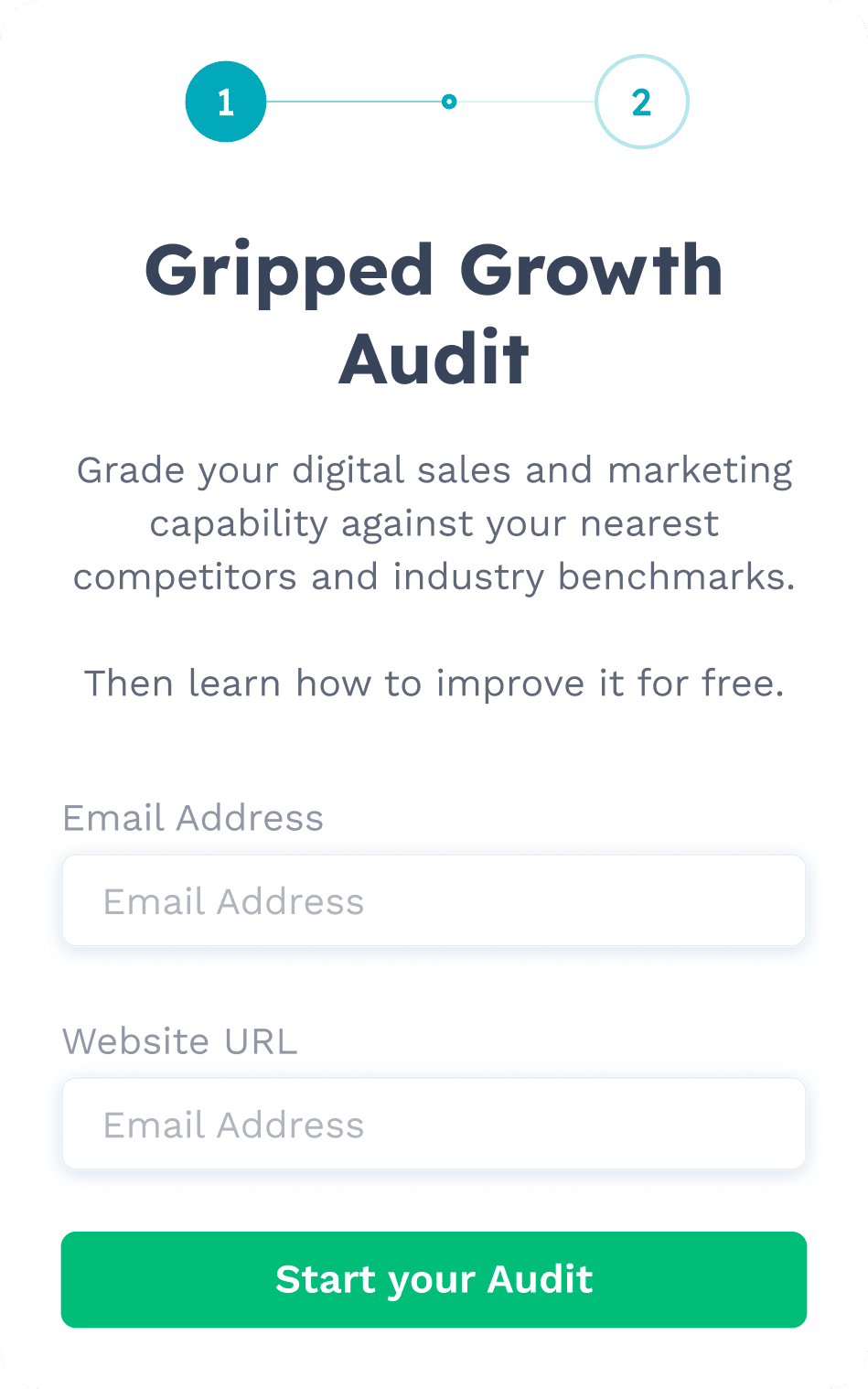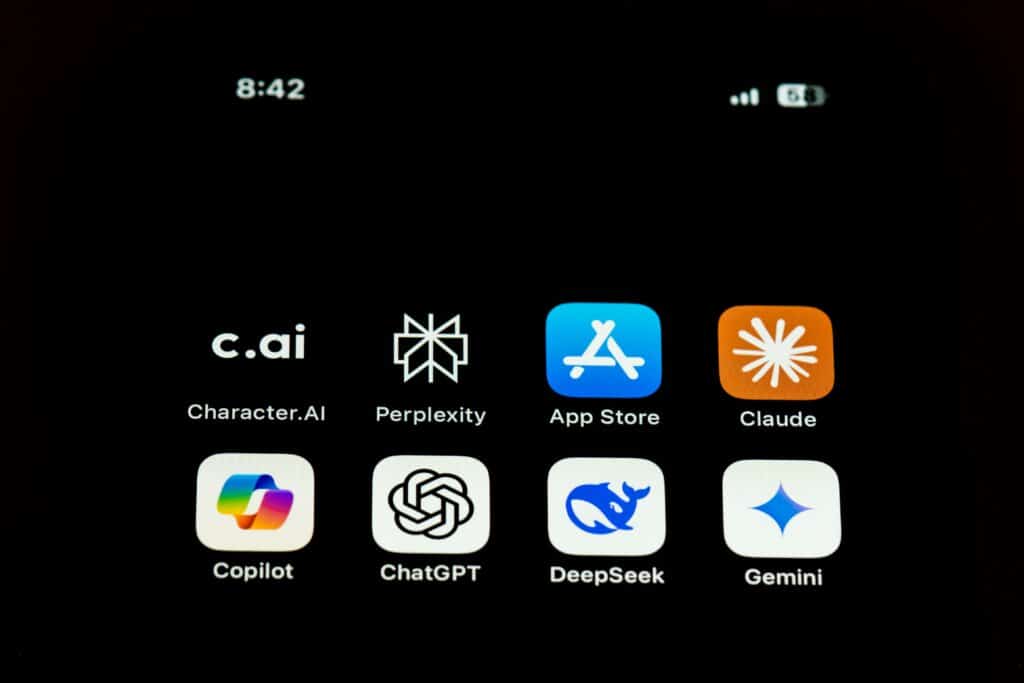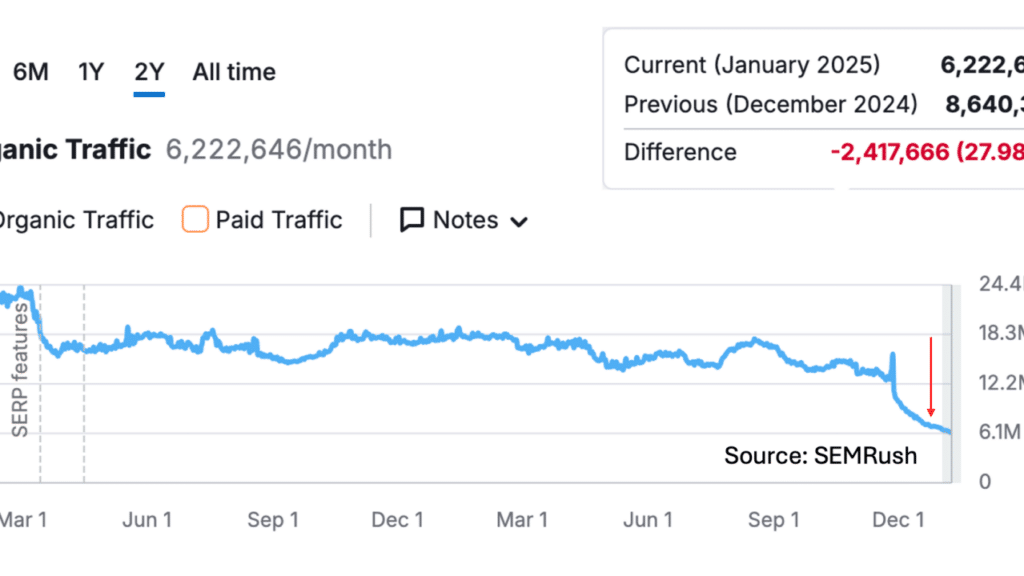Implementing a product-led growth strategy
Author
Sign up to our newsletter
Share this Article
Introduction
This article is written by someone (me) who found themselves at the heart of a product-led growth strategy for a VC-funded startup. Every point covered has been experienced first-hand, as I navigated the twists and turns of product-led growth and trawled through the mountain of resources sloshing about the internet. There are some really smart people out there that have trodden this path before, and I have linked to a handful of them as well as some helpful resources at the bottom of this article.
If you’re experienced in product-led growth and have built products from scratch with this in mind, this article isn’t for you. If you’re thinking of switching your model to a product-led growth one because of the promises you’ve been made by Ted Talks or your VC, this article will help you understand the hard work that surrounds this silver bullet.
So far, I’ve assumed that you don’t need to ask what product-led growth is – if you do, then take a look at the article we wrote on the subject. If you don’t have the time, here’s a quick summary: rather than have a prospect book a demo, speak to a sales team, sign a contract and get access to your software, product-led growth allows users to access your product immediately. Prospects are able to see a product’s value straight away, either through a freemium model or a free trial.
02
Product-led growth
Product-led growth is in Vogue (again) with, depending on your point of view, a fair amount of hyperbole to boot. Perhaps the most touted benefit of product-led growth is that it can dramatically trim your sales and marketing costs, which in turn can cut your Customer Acquisition Cost (CAC), one of the holy grails for any founder looking to please their investors.
What many product-led growth gurus fail to mention is that the effort and money spent on sales and marketing doesn’t disappear, it’s simply shifted to other parts of the business. What’s more, it’s shifted to parts of the business that either don’t exist, or aren’t equipped to plan and execute a product-led growth strategy.
So where is extra effort required? Before we get to that, let’s remind ourselves what the opposite of a product-led growth strategy looks like:
1
You define the target market and personas for your software.
2
You create and drive demand towards your website and specific landing pages.
3
You drive the prospect towards a conversation with your sales team, usually in the form of a demo.
4
Your sales team work their magic, sign the prospect up, and they start using your product.
A product-led growth strategy turns this model on its head, giving your prospect immediate access to value. Most product-led growth strategy articles, videos, books or podcasts you’ve engaged in no doubt wax lyrical on how this approach has benefited a handful of big-name tech brands, allowing them to raise tens of millions on their journey. What’s often lacking is an insight into the planning, execution, and trial and error that’s critical if you’re going to stand half a chance at a product-led growth approach.
I’ve decided to use the pirate metrics (AARRR) model to step through each stage of a product-led growth strategy. It’s a model that’s been around for over a decade and, although has been iterated on many times, provides a solid foundation to work from.
Dave McClure’s Pirate Metrics Model (AARRR)
Awareness
Create demand for your product
Awareness
Create demand for your product
Acquisition
Create & convert demand for you product
Acquisition
Create & convert demand for you product
Activation
Show users value
Activation
Show users value
Retention
Have your users return to your product
Retention
Have your users return to your product
Revenue
Generate revenue for your users
Revenue
Generate revenue for your users
Referral
Get others to promote your product
Referral
Get others to promote your product
Having trouble with the funnel?
One of our growth experts will provide you with a free audit of your existing sales and marketing presence and performance.
03
Awareness – create demand for your product
Whether you follow a product-led growth strategy or not, you’re going to need to create demand to acquire users. People don’t know they want your product yet, so this marketing effort and spend stays. One thing a product-led growth strategy touts is the acquisition of users through referral and word of mouth. Though this can be a helpful strategy, later we’ll explore why the number of people referring your product might not be as high as you would like. In any case, driving referrals takes marketing effort, and doesn’t happen entirely organically.
04
Acquisition – convert demand
You’ve educated the market, now it’s time to capture the demand. There’s nothing new we can tell you here about the channels and tactics you’ll need to do this. Once again, that marketing team and spend you thought you could trim need to spring into action.
Here’s the first twist – that all-important conversion point is no longer a simple HubSpot form where the only debate is “should we include a field to capture the job title or not?”. Now you’re dealing with a product signup flow, which is a completely different kettle of fish. You know you want it to be simple and easy, but your development team tells you they can’t get rid of those complicated password requirements, oh, and that “signup with Facebook, it will take 3 months to implement”.


An example of a nice clean sign-up form that asks for minimal info (if we don’t say so ourselves).
I hate to be the bearer of bad news, but your challenges don’t stop there, Marketing. Are you used to spinning up landing pages at will? A/B testing to your heart’s content? Tweaking copy every now and then to make filling in that form even more compelling? Forget it. By the time we’re at the signup page, we’re now off the website and into the product itself (take a close look at the URL). That means only one thing: developers need to be involved every time you want to make a change. Thankfully they’re not a scarce resource in your business 😉.
All that aside, some users will fill in that signup form and – lift off! Nearly. What’s this now? “Please check your email and click the verification link”. Ok, that shouldn’t be too hard. As long as the email is delivered within seconds so your user doesn’t get distracted, and it doesn’t end up in spam, and there isn’t an email from their boss or a customer competing with it, and it has compelling copy, and is formatted well. Navigate all those pitfalls and you should be golden.
As we get further into the acquisition process, one key question will start to arise: “whose responsibility is it to make sure all this stuff is working, and working well?” Marketing will tell you they’re used to leading the prospect to a form fill then sales take over. Product will tell you they’re working on core features needed to overtake competition. UX will tell you they design frictionless flows but don’t get involved in the nitty gritty. Developers are either working through their roadmap or fixing bugs.
On this problem – you know how easy it is to grab a nice email template in HubSpot, add some nice words and just trust HubSpot is going to deliver that email for you avoiding the spam folder? I hate to break it to you, but HubSpot doesn’t deliver emails on behalf of your product. You’ll need to give the development team a shout on that one, and hope that they have the infrastructure in place to deliver the magic you need.
Don’t underestimate how many users can drop out of the funnel (or flywheel, depending on your preference) at this stage. 1-2%? More like 10%-20%. You’d be amazed. If you get enough sign ups though, have no fear – you will start to get users to your product.
05
Activation – show your users value
Have you ever walked into a room to get something and then instantly forgotten what it was? For a user stepping into your product for the first time, the feeling can be similar. Your product will have made a promise to the user before they signed up, and their first moments with the product are where they realise that promise quickly, or forget why they came in the first place.
For Marketing, losing users at this stage is akin to a high bounce rate on a website. For Sales, the comparison is the number of no-shows you get to demo requests, and for Product, the similarity is the number of people who fail to show up for your pizza Friday session promoting that cool new feature no one wants.
This is the stage where most user journeys stop. Your user exits your product – never to be seen again. Anywhere from 40-60% of users fall away at this point.
So why does it happen? Why would someone buy into your product, overcome all the obstacles in the way of them getting to it, only to take one look around and make a swift exit?
There are several reasons. The frustrating thing is that often, on a user-by-user basis, you don’t know. This leads to endless internal debates, with each party swearing blind that it has nothing to do with the part of the journey they own. Here is a handful real-world reasons users might leave at this stage:
Reason 1: I wasn’t that interested
The user didn’t really understand what they wanted in the first place. Quite common and quite legit. Sometimes, people just see or read about something that sounds appealing, sign up to see what it is, realise they haven’t got a clue why they need it, and vamoose – they’re off.
Reason 2: I got distracted
There was genuine interest, but they got distracted. We’ve all been there – you start reading something, or stumble across a cool looking website, and then you a notification pops up or you get chatting to a colleague. Yet another browser tab is consigned to the graveyard of tabs never to be clicked on again.
Reason 3: I am confused
They were sure your product could add value, but they couldn’t figure out how to achieve it through the user interface you designed for them. The main misconception here is that because you know how to use your product and get value from it, everyone will.
Don’t forget, this is the holy land of product-led growth. Users don’t need tons of marketing explaining how your product adds value. They don’t want an expensive sales team demonstrating how your cool features sequence together to execute jobs – your product does this for you.
Well, it does if you’ve designed it that way. But designing it that way is hard. Really really hard. Because you have to know what someone wanted to achieve when they signed up for your product, and design your UX/UI to intuitively guide them towards this.
You could install a platform that overlays prompts, intended to guide users when they first enter your product, but that adds a ton of friction. A quick click, click, click, and the user is right back at the interface that must deliver value ASAP.
At this point, you want to get users to complete actions in your product that show they are hitting your North Star metric as quickly as possible. This means deciding what your North Star metric is, which means establishing what the most valuable part of your product is, which means revisiting the very core of your product’s proposition and personas. Though you were sure this decision was finally put to bed two weeks ago in an all-day workshop turned pub debate, it’s come back to haunt you.
Once you have your North Star metrics defined, you’ll need to design paths that keep users laser-focused on taking aligned actions as quickly as possible. These are often referred to as “aha” or “value” moments. The moment when someone decides your product is valuable enough to use again (we’re not close to monetisation yet, be patient) is arguably the most crucial, and, as discussed earlier, is also the most trepidatious. You’ll find yourself in quite frequent all-hands meetings at this stage, as you and the team try and work out how to bring your product promise to life as quickly as possible.
Once you’ve had a user realise value, welcome to your next challenge: getting them to come back.
06
Retention – have users return to your product
Maintaining momentum with users who’ve seen value in your product is critical. Turning users into returning patrons, and subsequently monetising them, is the only way to successfully reach the referral stage. Some will come back naturally, which is fantastic – however, some might require a bit of coaxing, which you’ll now have to do outside of your product.
So, how and when do you try to bring someone back to your product? Your primary channel here is email, but you’re going to have to think about this differently from your normal time-based nurture flows. Your emails are going to need to be driven by how users have or haven’t interacted with your product or certain features within your product. They will require a decent amount of thought and ongoing tweaking, and, as a reminder, you’re unlikely to be able to send them through your standard email marketing platform.
07
Revenue – generate revenue from your users
If you’re lucky enough to have started building a user base on your freemium product, congratulations. Despite all of the success stories you’ll read about on the internet, many don’t make it to this point. Now is the perfect time to turn your attention to how you’re going to monetise these users. Let’s not forget that product-led growth isn’t just about building your user base, it’s about building your revenue.
There are lots of things to consider here, but the first is pricing. Hopefully, someone is already thinking about this, as you will have decided early on what features you want to “give away” as part of your freemium model, dictating the features you want to monetise.
Once you’re confident in the features you intend to monetise, you’ll need to nudge users towards your paid plans via a range of tactics. This could involve anything from visible but restricted features in your product, to out-of-app promotions and reminders that a full-fat version of your product exists and is available to purchase.
Pricing discussions and decisions permutate every part of a business, and can’t be undertaken in a vacuum. Initial and ongoing analysis is crucial to ensure you maximise revenue without leaving money on the table. Ask for credit card details too soon and the user may not have seen enough value to warrant entering them. Too late, and you could be giving away too much value (and support resource) without generating revenue.
On the subject of credit card details – I’ll assume you’ve already got all that set up and integrated into your product, letting users unlock the right features based on the plan they are on. If you have, you know what a big job it was. If you haven’t, you’ve either got a big job ahead of you, or you’ve got a smoke and mirrors process, which your sales team (the one you wanted to downsize) can help execute for you.
08
Referral – get others to promote your product
One of the biggest promises of product-led growth is that the product not only sells itself, but others sell it for you. In the B2C world this can be commonplace, but with B2B products it can be a harder slog. The type of product you have will determine which elements of referral you might want to leverage. For example, products that require collaboration from external parties can benefit from a viral effect, if branding and promotion are baked into the product appropriately.
Other, more niche products may benefit from a different approach towards referrals. This could mean engaging with well-known promoters in your market, social media groups, or market communities. Having users promote and reference your product in your respective market is essentially free advertising, but don’t underestimate the effort required to curate this referral network.
09
Some final points to consider
Before we close, there are a handful of additional things to think about along your journey.
Signups
When forecasting sign-ups, people often think of the metrics associated with driving demand from channels (i.e google ads or referrals) as a barometer. It’s easy to assume that the number of clicks or referrals will be roughly the same as the number of people signing up for your product. As any experienced marketer who’s fiddled with landing pages to try and nudge the conversation percentage into double digits will tell you, it isn’t as simple as that. Brace yourself for an initial session-to-conversation ratio that’s less than 10%.
Signups also aren’t a proxy for users that can then go on to be monetised. The percentage of people that start the signup process and eventually go on to be active users is much lower than anyone ever anticipates. As covered earlier, users need “value” moments and solid reasons to return. The number of active users you will be able to monetise will be far less than the number of people that attempted to sign up for your product. Conservative forecasting should have this number initially at around 70-80%.
Tracking & Monitoring
This is crucial to remain aware of how users are passing through the onboarding stages, as well as how they are or aren’t interacting with your North Star metric features. The toolset you’ll need to do tracking and monitoring extends far beyond Google Analytics, meaning that once again, development resources will need to crank into action. You’ll have a whole new set of interfaces and dashboards to configure and understand, as well as a number of new costs.
Signups also aren’t a proxy for users that can then go on to be monetised. The percentage of people that start the signup process and eventually go on to be active users is much lower than anyone ever anticipates. As covered earlier, users need “value” moments and solid reasons to return. The number of active users you will be able to monetise will be far less than the number of people that attempted to sign up for your product. Conservative forecasting should have this number initially at around 70-80%.
Customer Success and Support
You’re going to very quickly get quite scared of the number of users who can't guide themselves through these stages themselves (either due to lack of understanding, motivation or confusion). As such, you need to be ready to spring into action and proactively or reactively help them. This could mean anything from jumping on Zoom or engaging with them via in-product live chat, to proactively writing product guides and developing videos.
10
Smart people and helpful resources
This article is really just a launchpad to some amazingly smart people in the industry, as well as some resources that I hope you’ll find useful in your product-led growth journey.
Samuel Hulick’s website Useronbaord.com was one of the first I came across many moons ago that got me thinking critically, step-by-step, about the journey users were taking when onboarding my product. His site has dozens of onboarding teardowns of well-known SaaS platforms, which help you think critically about yours.
Dave McClure’s AARRR model gives this article its structure, and it’s a foundation that’s been used by thousands to articulate thinking around product-led growth. There are endless articles I could point you at on this subject. Either check out his profile or just google AARRR.
Wes Bush is a prolific proponent of product-led growth. You can find his content everywhere, but I think this video here is the best summary of both the benefits, and the hard work that needs to go into implementing a product-led growth strategy.
Noa Ganot, founder of Infinity Product Leadership Academy is a guru in this space. She condensed some of her points on product-led growth in a recent Mind the Product podcast.
Speaking of Mind the Product, James Mayes, CEO and Founder of the very same, is an excellent person to connect with for all things product, especially when it comes to assembling the right teams to support product-led growth.
Adam Kinney at Mixpanel has posted a number of articles related to product-led growth. Most orientate around analytics (which Mixpanel is renowned for). I especially like “A close look at our analytics and metrics for product-led growth”.
As the founder of Pendo, a tool that can sit at the heart of a product-led growth strategy, Todd Olson has a thing or two to say about the subject. Here’s an hour of insight from him in an easy-to-digest video.
Andy Boyd at the Product-Led Growth Collective has a really insightful article that explores the throughput of the AARRR funnel.
Kirsty Finlayson at Chameleon has one of the most comprehensive product-led growth articles I’ve seen, which compliments this one really well.
Ashley Smith has spent her career driving product-led growth. Her video here gives really good insight into how you can use product-led growth as an indicator for investment.
Having trouble with the funnel?
One of our growth experts will provide you with a free audit of your existing sales and marketing presence and performance.
You May Also Like
Prompt SEO: How B2B SaaS Marketers Can Win the AI Search Race
Prompt SEO is emerging as a key strategy for B2B…
LLM Optimisation for B2B SaaS Marketers: How to Rank in AI-Generated Responses
As generative AI transforms how people search for information, Large…
Countering Declining Organic Search Traffic: A Playbook for SaaS CMOs
Organic search has long been a cornerstone of SaaS growth,…



